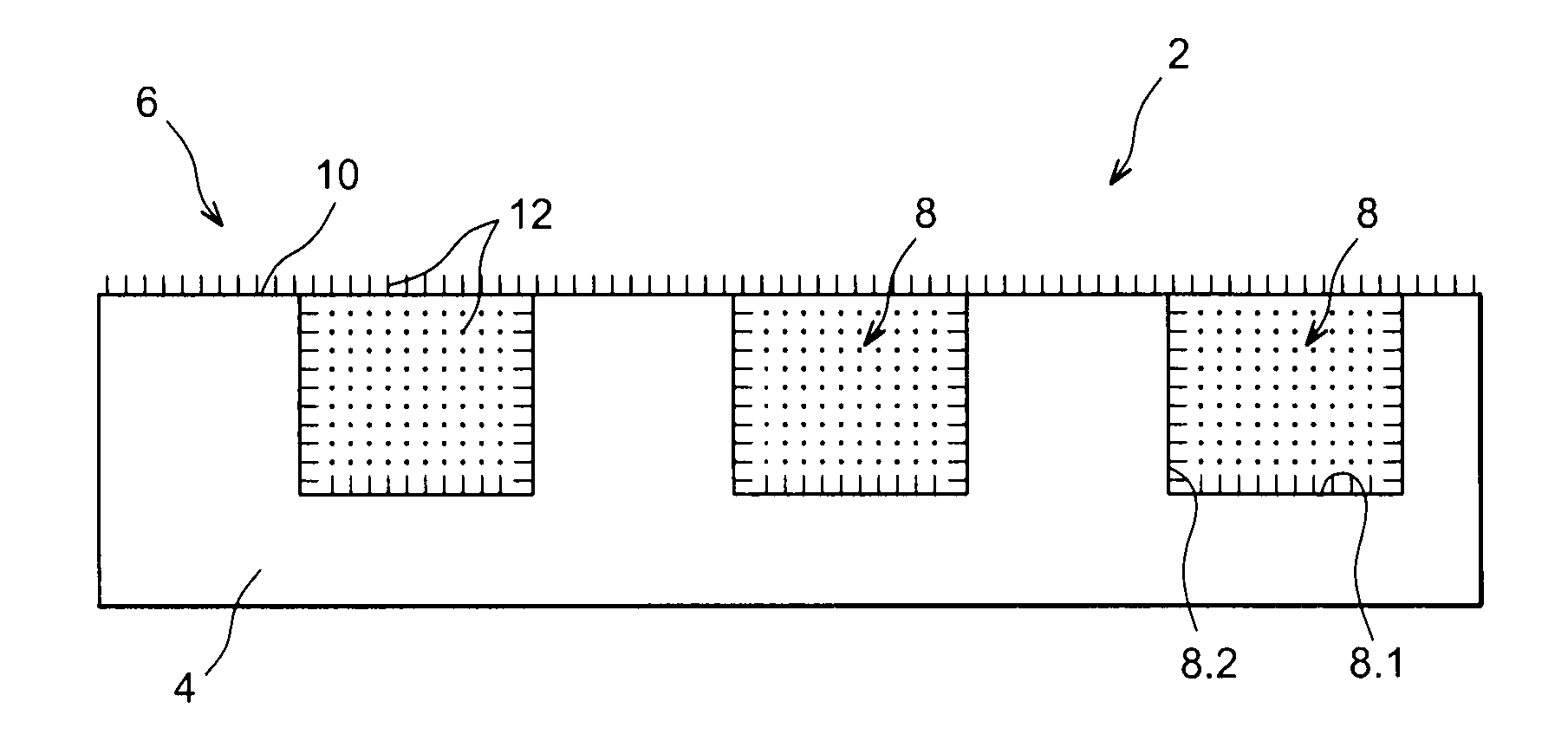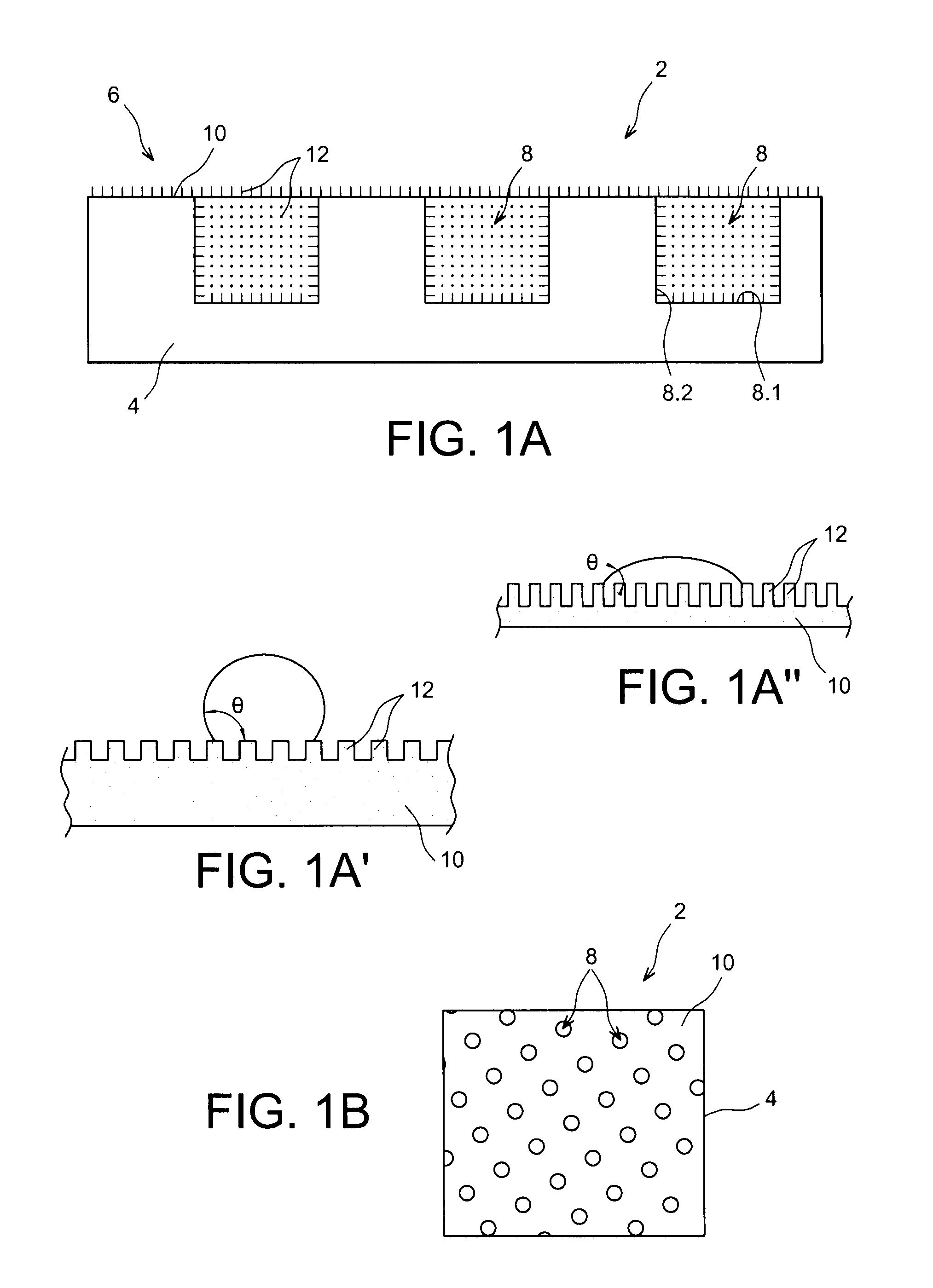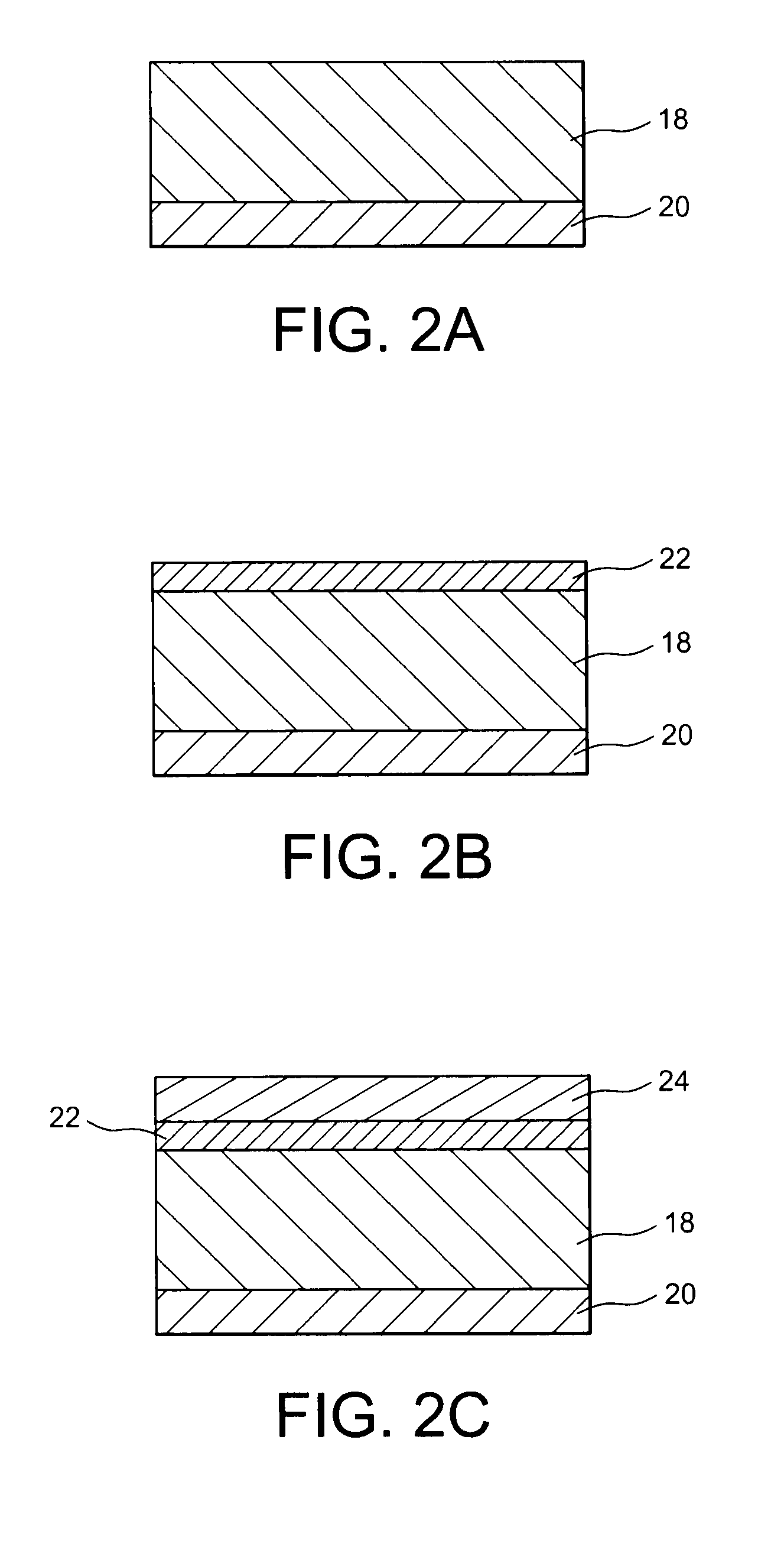Heat exchange structure and cooling device comprising such a structure
a heat exchange structure and cooling device technology, applied in the direction of indirect heat exchangers, lighting and heating apparatus, coatings, etc., can solve the problems of reducing the thermal resistance, the power limit of power components, and the minimization of electronic components, so as to improve the efficiency and improve the effect of performan
- Summary
- Abstract
- Description
- Claims
- Application Information
AI Technical Summary
Benefits of technology
Problems solved by technology
Method used
Image
Examples
Embodiment Construction
[0061]In the following description, the liquid to be evaporated will be an aqueous solution; consequently, we will talk about hydrophilic or hydrophobic surfaces. But it is understood that the present invention is not limited to the use of aqueous solutions; it may for example involve oil, in which case we talk about oleophilic or oleophobic surfaces. More generally, we will talk about wetting or non-wetting surfaces.
[0062]FIGS. 1A and 1B show a portion of a heat exchange structure 2 according to the invention comprising a primary face 6 intended to be arranged opposite the component to be cooled, and provided with holes 8, not passing through the other face of the structure.
[0063]In the illustrated example, this primary face is carried by a planar plate 4.
[0064]The structure can comprise a primary face of any shape, concave, convex, or made up of planar, concave and / or convex surfaces.
[0065]The holes 8 comprise a bottom 8.1 and a side wall 8.2.
[0066]In the illustrated example, the ...
PUM
| Property | Measurement | Unit |
|---|---|---|
| depth | aaaaa | aaaaa |
| depth | aaaaa | aaaaa |
| size | aaaaa | aaaaa |
Abstract
Description
Claims
Application Information
 Login to View More
Login to View More - R&D
- Intellectual Property
- Life Sciences
- Materials
- Tech Scout
- Unparalleled Data Quality
- Higher Quality Content
- 60% Fewer Hallucinations
Browse by: Latest US Patents, China's latest patents, Technical Efficacy Thesaurus, Application Domain, Technology Topic, Popular Technical Reports.
© 2025 PatSnap. All rights reserved.Legal|Privacy policy|Modern Slavery Act Transparency Statement|Sitemap|About US| Contact US: help@patsnap.com



